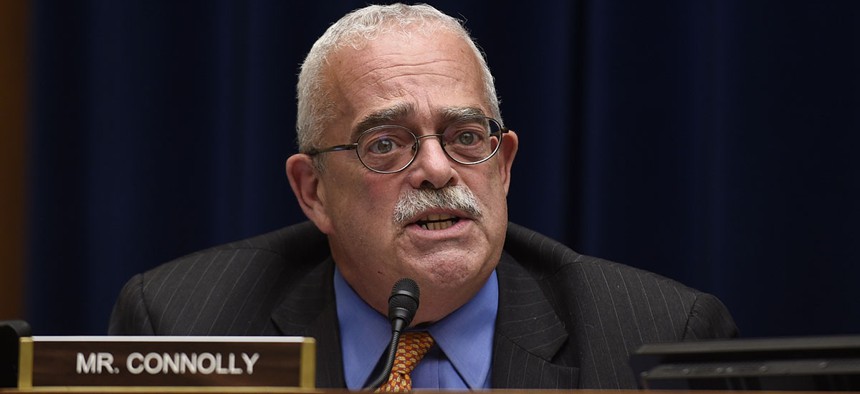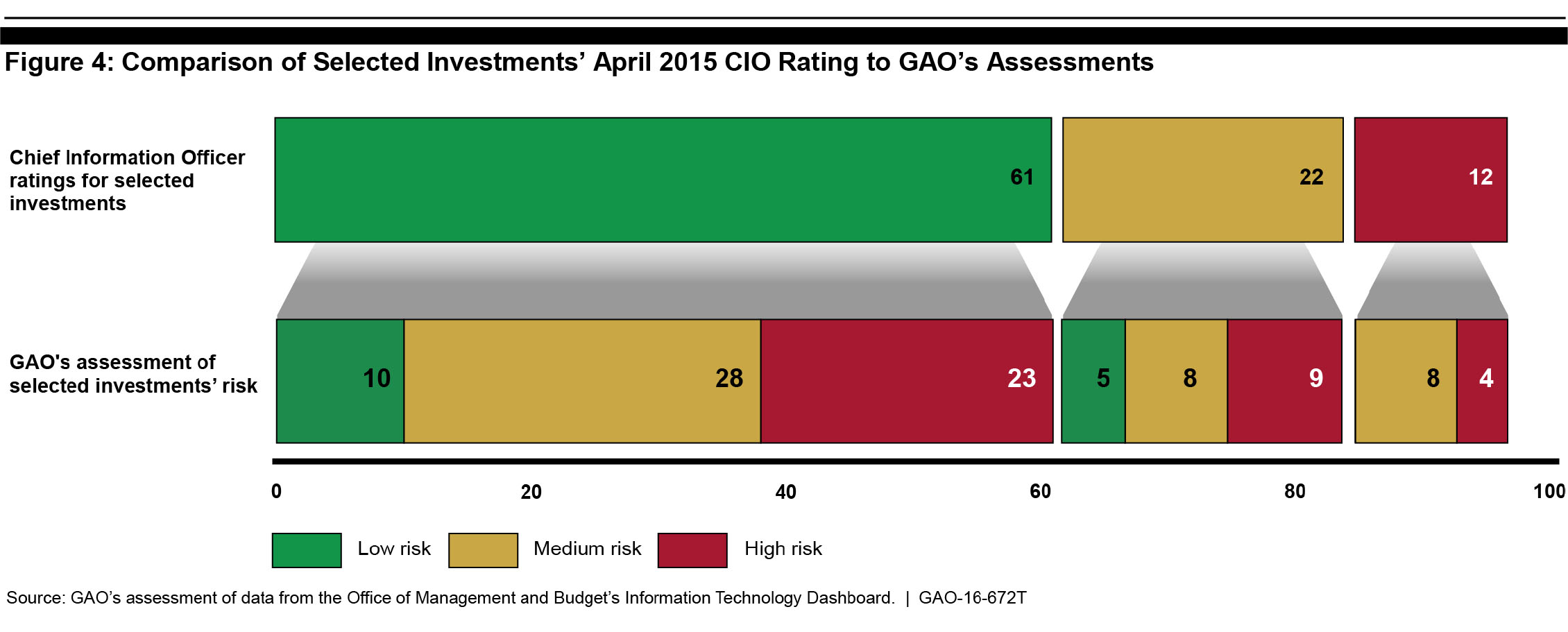Congress Flexes Muscle on FITARA

House Oversight Committee member Rep. Gerry Connolly, D-Va. Susan Walsh/AP
"We are going to stick with this,” said Rep. Gerry Connolly, D-Va., who promised a bipartisan effort to ensure FITARA is carried out successfully.
Congress cracked the legislative whip Wednesday on a cadre of top tech officials from various agencies regarding their updated scores implementing the Federal Information Technology and Acquisition Reform Act.
Wednesday’s hearing before the House Oversight and Government Reform’s IT operations subcommittee, featured chief information officers from NASA and the departments of Commerce, Energy and Labor.
Despite overall improvements over the first batch of grades released in November, agencies were not immune from criticism as legislative officials made the tonal transition from encouragement to enforcement.
If November’s hearing was the IT subcommittee getting psyched up to improve IT across government, Wednesday’s sequel was its members flexing their muscles, ready for a lengthy battle to ensure FITARA is carried out as intended.
"We are going to stick with this,” said Rep. Gerry Connolly, D-Va., who promised a bipartisan effort to ensure FITARA is carried out successfully.
Connolly Blasts ‘Outrageous’ Energy Exemption
Connolly, considered one of the founding father of FITARA, directed his most intense remarks at Energy Department Chief Information Officer Michael Johnson. Energy’s national labs, which lead research efforts in various emerging technologies like advanced supercomputing, had received FITARA exemptions in a Senate funding bill last year.
That means, for the time being, its national labs can buy IT without Johnson’s approval. The exemption will remain in place at least until a new appropriations bill is signed into law.
Connolly called the exemption “outrageous,” noting that “if anybody could have benefited from FITARA, it’s the national labs.” He warned Johnson of a “bipartisan fight” if exemptions for the national labs are attempted again.
» Get the best federal technology news and ideas delivered right to your inbox. Sign up here.
Energy made the largest scorecard improvement among the CFO agencies from November to now, moving from an F to a C.
DOE significantly improved its scores in data center consolidation – it closed 75 data centers, saving $17 million – and also boosted scores in incremental development and improving the transparency of CIO risk assessments.
After stumbling out of the gate, Energy also received approval from the Office of Management and Budget on its FITARA implementation report.
For the first time, Johnson said, a CIO will be included on the energy systems acquisition advisory board, which analyzes all major investments above $400 million.
Can We Get to Mars with Fortran?
Subcommittee Chairman Will Hurd, R-Texas, echoed the bipartisan tone around IT issues, praising some agencies for their progress and sharply criticizing poor performance and the appearance of inactivity.
Hurd questioned Labor Department CIO Dawn Leaf why it took so long to get the agency’s implementation plan approved and pressured Commerce CIO Steve Cooper to explain whether and how the agency was spending money it saved through data center closures. Leaf responded that Labor needed to give the plan its “due diligence.” Cooper explained that dollars are redirected “based on priorities of new investments or risk-based issues that need to be addressed.”
Hurd’s harshest criticism, however, went to the agency responsible for putting humans in space.
“Are we going to get to Mars if we’re still using Fortran?” Hurd asked NASA CIO Renee Wynn, referring to the archaic programming language. NASA earned an F score – the lowest among large agencies.
Rep. Mark Meadows, R-N.C., asked Wynn whether NASA could improve to a C by the next hearing.
“We are on track to head towards a C as long as we stick to the plan our agency approved,” Wynn said.
In accordance with NASA’s FITARA plan, the CIO now has a direct line to the NASA administrator, which translates to leadership buy-in. The space agency didn’t have that before, and subsequently, it’s IT efforts have been maligned.
“For us to make changes in the CIO world, we have to have the support of senior leadership,” Wynn said. “We’ve got that in place now. It’s time for me and my team to capture the moment. We are not proud of our grade.”
Risky Business?
Meadows also encouraged CIOs across government to be honest about how risky they rate their IT investments. Testimony from Dave Powner, the Government Accountability Office's director of IT issues, indicate CIOs “greatly underestimate risk.”

GAO compared the CIO risk assessment ratings of 95 IT investments across 15 agencies with data from the IT Dashboard and found that only 10 of 61 investments rated as “low risk” by CIOs were actually low risk investments. Similarly, more than twice as many IT investments were actually “high risk” than were reported by CIOs.
“It’s an indication that we need better transparency and accuracy to better manage IT,” Powner said at the hearing.
On the dashboard, low-risk investments appear green, supposedly signifying healthy IT investments. Meadows, though, said he’d rather see red if it means a more accurate account of what’s really going on within an agency, and explained that agencies received higher scores in the transparency metric simply by reporting their investments accurately.
Meadows said he’d even act as an advocate for agencies to appropriators if they’re acting in good faith at implementing FITARA.
FITARA Scorecard 3.0?
The first two FITARA scorecards were scored based on the metrics of data center consolidation, IT portfolio review savings, incremental development and risk assessment transparency. While a promising start, the next iteration of the scorecard may contain another metric Hurd called “disproportionately more important” than the others: CIO authority.
FITARA was designed to give CIOs authority over IT budgets, often referred to as the power of the purse. Agencies have differing structures, and while some – like Wynn at NASA – have a direct line to their agency lead when issues arise, others report to the lead’s deputy. Powner also alluded to power struggles between agency CIOs and chief financial officers that result in CIOs with diluted power over tech investments.
“Some CFOs are worried about losing power; some are working closely with CIOs,” Powner said. “We’ve seen some progress, but we need more equal footing. In trying to get arms around the IT budget, I don’t think CIOs can do that without CFOs’ help. If you don’t fix CIO authority, you’ll continually struggle.”
Hurd suggested the next scorecard may rate CIO authorities within agencies based on criteria such as whether the CIO reports to the agency’s top official and whether other agency CIOs report up to the agency’s top CIO.
He also added that some CFOs might be called to testify alongside CIOs.



